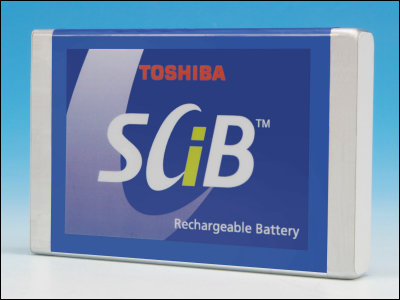IBM develops a new low-cost, eco-friendly battery derived from seawater, can high-speed charging of electric vehicles be realized?

by
Today, many people carry devices such as smartphones and tablets, and the shift from fossil fuels to electric power is progressing in vehicles, so the demand for high-performance batteries is increasing. IBM Research 's research team announced that it has developed an environmentally friendly battery that uses three unique materials that have never been used for batteries and that has higher performance than traditional lithium-ion batteries.
Free of Heavy Metals, New Battery Design Could Alleviate Environmental Concerns | IBM Research Blog
https://www.ibm.com/blogs/research/2019/12/heavy-metal-free-battery/
As battery demand increases, so does concern about the sustainability of battery technology. IBM Reseach noted that heavy metals such as cobalt and nickel used in lithium-ion batteries pose significant environmental and humanitarian risks. Cobalt mining has long been regarded as a problem, and the development of new batteries with consideration for the environment and humanity is desired.
The fact that smartphone batteries are made of cobalt excavated by child labor-gigazine

Therefore, IBM Reseach's research team has developed a new battery that uses three unique materials that have never been used in batteries, and does not use heavy metals or other materials of concern for procurement. Substances used in this battery can be extracted from seawater and can be collected in a less invasive way than mining heavy metals. The research team used AI to find the best material for the battery, and provided human researchers with insights derived from large amounts of data, accelerating the speed of improving battery performance.
The new battery developed by IBM Reseach uses a cathode material that does not contain cobalt or nickel and a safe liquid electrolyte with a high flash point . IBM Reseach argues that this combination has succeeded in suppressing the generation of lithium metal dendrites (dendrites) during charging, which seems to be related to battery performance degradation, and improving battery performance more than before. You.

by
According to IBM Reseach, the newly-developed battery had a very high potential in the initial testing phase, and claims that it was able to be optimized to outperform lithium-ion batteries with the following factors:
・ Low cost: Since heavy metals such as cobalt and nickel are not used as the cathode material, the cost may be reduced.
-Fast charging: A battery configured for high power can be charged to 80% charge capacity in less than 5 minutes.
-High power density: A power density of 10,000 W / L ( watts / liter ) can be achieved, exceeding the level that a lithium ion battery can achieve.
・ High energy density: Achieves an energy density of 800 Wh / L or more comparable to the state-of-the-art lithium ion battery.
-Excellent energy efficiency: The ratio of the power to charge the battery and the power released from the battery is over 90%.
・ Low flammability: Low flammability of the electrolyte is realized, so it can be safely mounted on vehicles.
These optimizable elements were confirmed at the research stage of IBM Reseach's laboratory at the time of writing the article, but if commercialization becomes possible, low-cost and quick-chargeable electric vehicles may be realized Maybe. In addition, high energy and power densities can be useful in the field of electric aircraft.

by MikesPhotos
IBM also announced partnerships with Mercedes-Benz , Central Glass , the world's leading battery electrolyte supplier, and battery manufacturer Sidus to move new batteries from the laboratory to the commercial stage. While large-scale development of next-generation batteries is still under investigation, IBM says it expects partnerships with multiple battery companies to help realize the next-generation battery ecosystem.
Related Posts:







